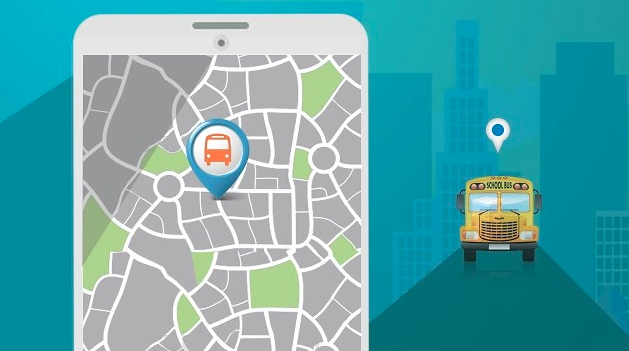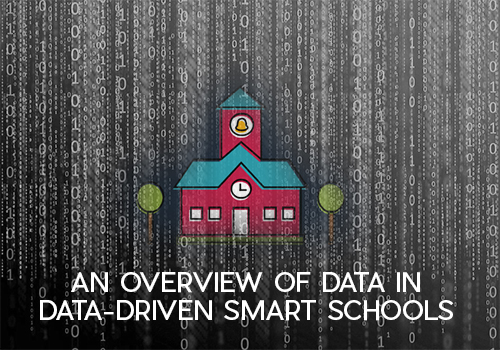Categories(658 Blogs)
Select Category
Watch Right Now
Teacher App - Class
Schedule & Attendance Management App
Parent App from Edsys

Best School Bus Tracking System

Cashless School - For Smart Schools of Tomorrow


An Overview of Data in Data-Driven Smart Schools

Schools are in constant search for new approaches to fulfil the needs to improve student achievement. A data-driven school tries to achieve the same by gathering, evaluating and utilizing all kinds of student-related data.
The various types of data that data-driven smart schools put to use include:
- Demographic data
It includes information regarding the ethnicity, gender and socio-economic status of students. This helps the schools to make decisions regarding tuition fees, providing financial aid and other services to deserving students. It also helps to identify the students who are performing well academically and those who require extra help. Demographic data helps to determine enrolment growth in school over the years. This helps to analyse future enrolment and the resources and services that may be required
- Assessment data
The data is gathered, evaluated and is used to improve the programs the schools have adopted and to ensure that the quality of instruction is good enough. Test scores of students are interpreted to determine how well the students are performing and to provide additional help to the low-performing students. Also, the test scores of current and previous years are compared to understand the effectiveness of programs adopted by the schools. After the test scores are collected and interpreted, the results are distributed among the directors, teachers, parents and the students. This makes it easy for the schools to get support from the board and the parents. Also, they can use the data to opine about the enhancements that can be made in the programs adopted by the schools
- Conduct data
This data is used to determine the behavioural pattern of the students. It involves analysis of student behaviour during specific times of the day and specific classes and to implement new approaches, if needed. The schools can also provide training to the staff so that they not only help to improve academic skills but also the social skills of students. Gathering of conduct data doesn’t end with implementation of new approaches to improve student behaviour. The data has to be continuously collected and analysed to ensure that the new approach works
- Attendance data
Students who don’t attend school regularly or those who don’t reach school on time do not tend to perform well academically and this in turn, affects the reputation of the school. Schools can provide the attendance data to the parents, who are the ones to make sure that their children attend the school regularly and on time
However, evaluation of data doesn’t mean that you can take data from any test conducted in school, dissect it and get the needed information. Such results may just give you a general idea about the students who are not good at certain skills. But, you won’t get answers to why they are weak and how you can help them improve. So, the best way is to create provisional assessments apart from the regular exams or tests, particularly to have a better understanding of students’ strengths and weaknesses.
Here are few more steps you can take to be a successful data-driven school:
- Allot professional freedom to teachers
If the teachers are allowed to be flexible about their approaches, it helps them to grow in the professional front while helping the students to improve. So, allow the teachers to create their own set of assessments for their class and to decide upon the teaching approaches they plan to implement. Also, provide the teachers with professional development training occasionally
- Study the growth of other data-driven schools
Look for schools that have achieved success by implementing data-driven approach. Study the measures they took that led to their success and try to implement similar steps in your school, as well
- Analyse the requirements
Before you go forward with the assessments, understand what’s necessary for the students and what’s not. Also, try not to include every measure in the first step itself. Take time to determine the skills that are of top priority and then, train the students accordingly. You can then assess the students to understand if they are good enough and if not, provide additional training to the low-performing students
- Create high-quality assessments
High-quality assessments will give you high-quality data. Set certain guidelines that the teachers have to follow while creating assessments, like:
1. Meeting the required standards
2. Focusing on the end-goal of the assessment
3. What the students are provided with during the assessment
Also, train the teachers to create effective assessments that meet the above mentioned criteria
- Set a format for creating data reports
After all the hard work, you don’t want the data reports to be of different format and confusing, do you? Therefore, decide how you want the final report to be like, beforehand. Most schools create data reports in the form of Excel spreadsheets with all necessary details filled in. You can also adopt the same, if you want
- Hold data-analysis meeting
You need not wait for an academic year to end to analyse the data. Instead hold meetings on the last working day of every week, post class hours for all staff to sit together and evaluate the data. This reduces the workload and also, gives a clear understanding of the measures that work and what should be done next
- Evaluate success
See how effective the measures you took have been at the end of the academic year. This analysis keeps the teachers and students motivated to work harder as they get to see how far they have come and how much more they have to go further
A data-driven school ensures that every student receives quality education despite their race, gender and socio-economic status. In short, the data, a school gathers, helps it to understand the requirements of the students and to respond accordingly to bring about positive changes in the students’ lives for good.
Recent Blogs
Our Educational Services
Popular Blogs
Subscribe

SUBSCRIBE TO OUR NEWSLETTER
Sign Up and Recieve the Latest News
Don’t Worry, We Don’t SpamExplore Our Extensive Researched Educational App Directory
Visit Now














